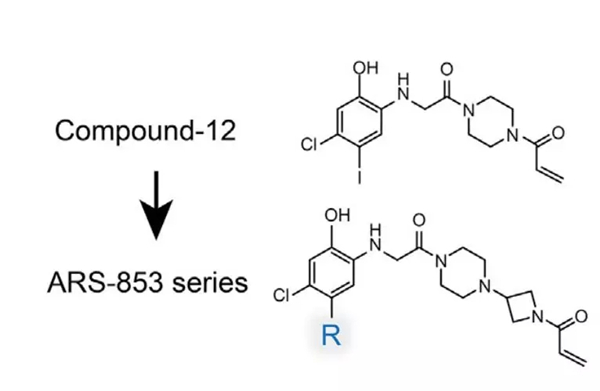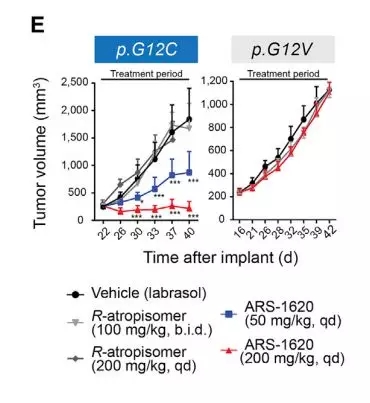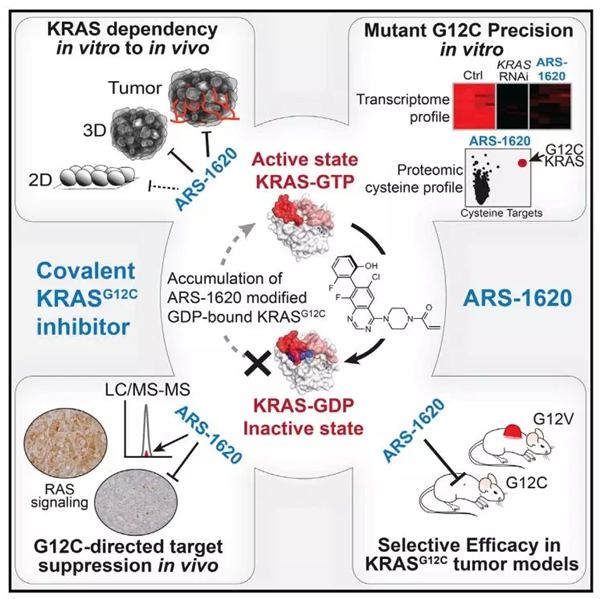Chinese scientists found a solution to this drug-free cancer mutation January 26, 2018 Source: Academic Jingwei In the field of cancer research, KRAS is one of the most well-known oncogenes: scientists have long discovered that this gene has been mutated in many human cancers. However, over the past few decades, after several generations of R & D personnel's unremitting efforts, we still do not have an effective molecule that can target this gene mutation. Therefore, KRAS mutations were once considered by the industry to be "no cure." ▲ Dr. Liu Yi, the author of the study (Source: Kura Oncology official website) Today, a study published in the top academic journal Cell is expected to make this assertion a history: the research team led by Dr. Liu Yi and Dr. Ren Pingda, the co-founder and chief scientist of Wellspring, discovered that one is called ARS- The 1620 molecule selectively targets common KRAS mutations in an in vivo model and inhibits tumor growth. If this new drug can further prove its potential in clinical trials, it is undoubtedly a great gospel for the majority of cancer patients! Before introducing this study, let's take a look at the KRAS gene. Previous studies have shown that nearly half of the KRAS gene is mutated to KRAS G12C, ie, its first codon has a missense mutation. This mutation can make the KRAS protein overactive, leading to abnormal activation of downstream signaling pathways and induction of cancer. According to statistics, there are 11%-16% of lung adenocarcinoma cases with KRAS G12C mutation. This ratio is about 1%-4% in pancreatic cancer and colorectal cancer. Although this KRAS mutation has brought a huge medical burden, people have not found a suitable molecule to effectively target this mutation. Only a few attempts have failed to demonstrate its ability to suppress in in vivo models. ▲ARS-853 and its analogues let researchers see the dawn (Source: Cell) In 2016, several research teams made breakthroughs in the development of small molecule inhibitors targeting KRAS mutations. They found that in cell models, ARS-853 and its analogs can covalently interact with the KRAS G12C mutant protein that binds GDP, transforming it into a "inactivated" conformation. This of course allows researchers to see the dawn, but also the next question that has to be answered - can the potential of these molecules be replicated in the in vivo model? This is the result of the team of Dr. Liu Yi. First, they redesigned and synthesized a number of candidate molecules based on the ARS-853 series of molecules. The goal is to screen out the most optimized and optimal pharmacokinetic structures. After analyzing the biochemical properties and cell target activity of these molecules, a molecule called ARS-1620 stood out and its activity was 10 times that of ARS-853. ▲The mechanism of action of ARS-1620 (Source: "Cell") Subsequently, the researchers analyzed the potential off-target effects of ARS-1620—as a covalent inhibitor, if it significantly inhibits the function of other proteins, it can have unintended side effects. Analysis shows that KRAS G12C is its main inhibitor. In addition, the researchers also analyzed the genome-wide expression and confirmed that ARS-1620 can indeed inhibit the downstream pathway of KRAS. Next, it is the most stressful moment. The researchers asked the mouse model to take ARS-1620 orally and analyze a series of indicators of the molecule in the body. They are happy to see that this molecule has excellent bioavailability and is stable in the blood. ARS-1620 also has a good peak concentration near the tumor. ▲ARS-1620 effectively reduces the volume of KRAS G12C tumors in vivo (Source: Cell) Can these excellent properties make ARS-1620 inhibit tumor growth in the body? The researchers further tested the effects of ARS-1620 in a mouse tumor model, and the results were delightful! At two different concentrations, ARS-1620 significantly reduced the volume of KRAS G12C tumors, and the magnitude of the reduction was related to the dose. In addition, another KRAS mutation (KRAS G12V) tumor was not affected by the molecule, reflecting the specificity of the molecule. In a number of KRAS G12C tumor models, the researchers successfully repeated this result—ARS-1620 significantly reduced tumor volume in vivo and demonstrated good selectivity. ▲ Graphic of the study (Source: Cell) "The data from these mice in vivo indicate that ARS-1620 is effective in multiple models. This is expected to translate into new therapies for cancer patients with KRAS G12C," said Dr. Liu Yi, the author of the study: “I am grateful to all the researchers who participated in this research. Their wisdom and efforts made this breakthrough possible.†We congratulate this team for making breakthroughs in designing small molecule inhibitors for KRAS mutations, and I wish this molecule will go further in the next series of experiments and benefit patients as soon as possible! Frozen Mahi Mahi Fillet,Frozen Mahi,Mahi Mahi,Frozen Mahi Mahi Portion Zhoushan City Shuangying Aquatic Products Co., Ltd.  , https://www.shuangying-aquatic.com



